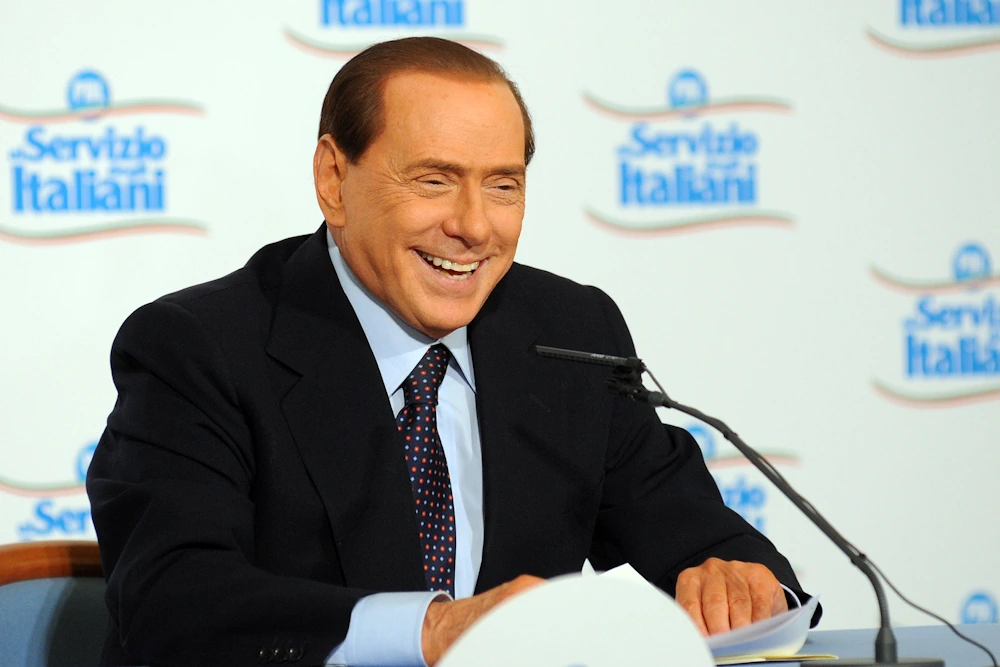How Sacchi's AC Milan dominated football through innovation
Di Stefano's Real Madrid, Cruyff's Ajax, Pele's Santos, Busby's Manchester United. These are some of the best teams in the history of football that, just by mentioning their names, command significant respect for what each of those teams has achieved. Each one was dominant in its time and each one did it in its own way.Today we bring one of the most successful and innovative teams of the last decades of world football, being remembered precisely for that, for the tactical changes it implemented, promoting players of enormous quality. Sacchi's Milan has been a team whose winning performance was extremely notable in a period of few seasons where it won almost all the competitions in which it participated.

Silvio Berlusconi
The owner Silvio Berlusconi
Silvio Berlusconi was an Italian businessman and politician who was always surrounded by an aura of controversy and attitude that always attracted attention. In March 1986, Berlusconi became the owner of AC Milan, which at that time was coming from a difficult period with several seasons without winning notable trophies (its last Serie A title had been in 1979), even spending two non-consecutive seasons in Serie B in the early 1980s.After a first season in which he did not have much influence on the club, maintaining both the player base and the manager and staff that were already there, in the second season he did make his personal bets. Among them, that of a semi-unknown coach named Arrigo Sacchi, whose achievements were the promotion of Parma from Serie C1 to Serie A and defeating Milan itself in the Coppa Italia.
The Prophet of Fusignano
Sacchi began his career as a coach at Fusignano, his local club, when he was only 26 years old, because, in his own words, "he was not good enough as a player." Alfonsine, AC Bellaria, the youth teams of Cesena and Fiorentina and two spells at Rimini, where he almost managed to win the Serie C1. In 1985, Parma decided to hire him and in just two years, he achieved the feat of promoting them twice in a row. Thanks to this, Berlusconi noticed him and took him to AC Milan where he had to face criticism and distrust from the Milan media.Sacchi 's tactics
Sacchi had grown up admiring the great teams of the 60s and 70s, such as Pele's Brazil or Di Stefano's Real Madrid, characterized by showing their superiority in pitching due to the great quality of their players and their offensive tendency. On the other hand, Italy has always had the label of catenaccio, a style more focused on defense.Tactically, Sacchi's Milan proposed a 4-4-2, where the strikers had an important job of putting pressure on the rival defense and an understanding of all the players of how they should occupy the spaces in the pitch both when they had possession of the ball like when he was defending himself. The manager sought to maintain a distance of between 20 and 30 meters between the last defender and the most advanced striker.
Another important concept was numerical superiority both in defense and attack, hence Sacchi implemented zone defense, which allowed more defenders to be achieved than rival attackers. It was also essential to use full backs to join the attack in order to achieve numerical superiority in that facet of the game. All of these ideas may seem very common today but at the time they were an important innovation, especially in Italy.
One of the main hallmarks of this version of Milan was how it took advantage of the offside rule. The leader of the defense, Franco Baresi, analyzed the rival's offensive play to announce with a shout the moment when all the Milan defenders had to move forward to leave the opponents offside. Thus, Milan deactivated many of the rival's plays.
The interpreters
Any innovative idea requires the right players to carry it out, otherwise it would not have the expected results. In this sense, Sacchi had one of the best back four in the history of football with Tasotti, Baresi, Costacurta and Maldini. Baresi was the leader of the defense and the one in charge of giving the signal to leave the rival offside. The defenders also had a very important role in initiating offensive plays since they took advantage of rival schemes that tended to be very withdrawn, creating the numerical superiority sought by Sacchi.In the midfield, Rijkaard and Ancelotti stood out to continue with the construction of the play where Donadoni and Colombo were in charge of staying in constant movement to create and locate spaces in the rival defense and give passing options to the center midfielders. Gullit had the freedom to position himself both in the midfield and close to the striker, making him very difficult to mark and his ability to interpret the plays made him a constant danger in addition to his vision, shot and header.
The icing on the cake was Marco Van Basten, one of the best strikers of his generation and a born scorer with a large amount of technical resources that made him a threat for any defense. Sacchi's first spell at Milan was from 1987 to 1991, where he went to train the Italy national team. In those 4 years, 3 times the Ballon d'Or was won by a Milan player (Gullit and Van Basten on two occasions) and in 1988 and 1989, the entire shortlist was from the Milan club.
AC Milan, with Sacchi on the bench, in those 4 seasons, won two European Cups, one Serie A, one Italian Super Cup, two European Super Cups and two Intercontinental Cups. In short, they won 8 trophies in just 4 years. The success of the Milan club with its ideas, especially with the offside, was so great that the rule was modified in 1991 based on it, which tells us how transcendental this team was in the history of football.
